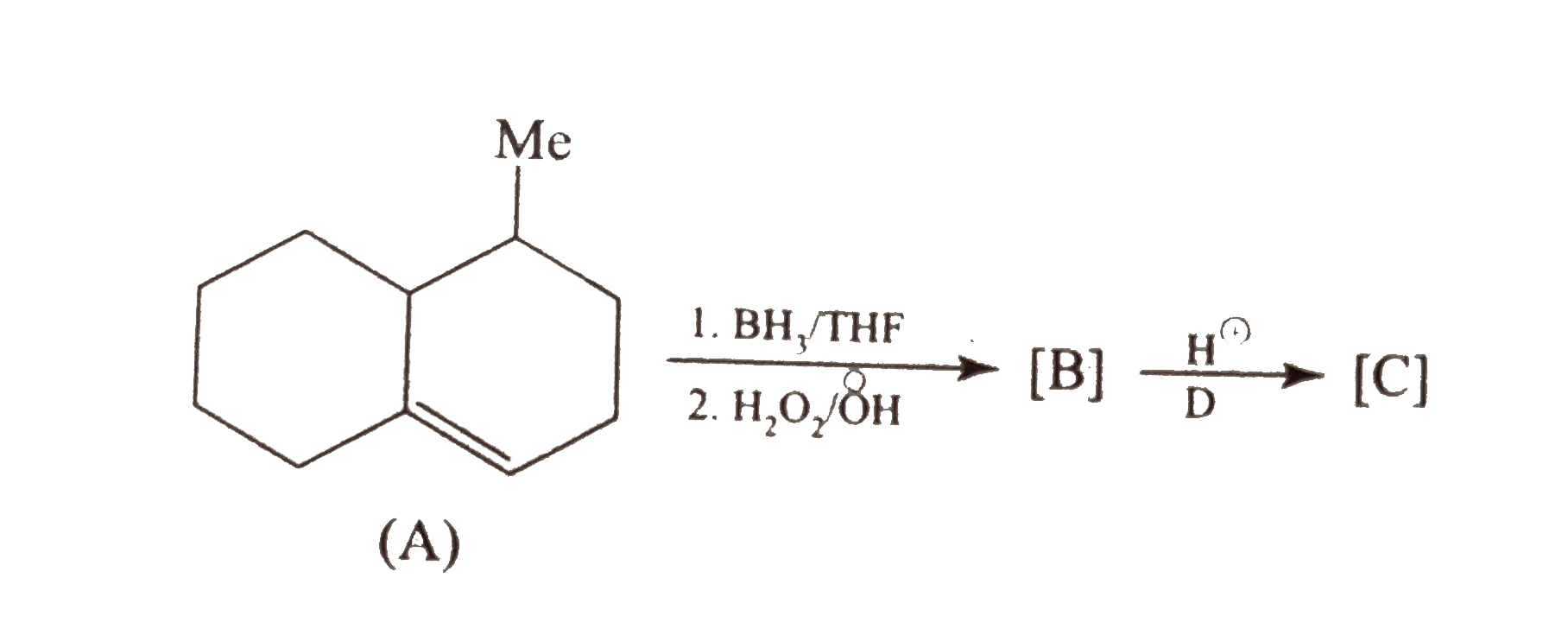Complete the following:
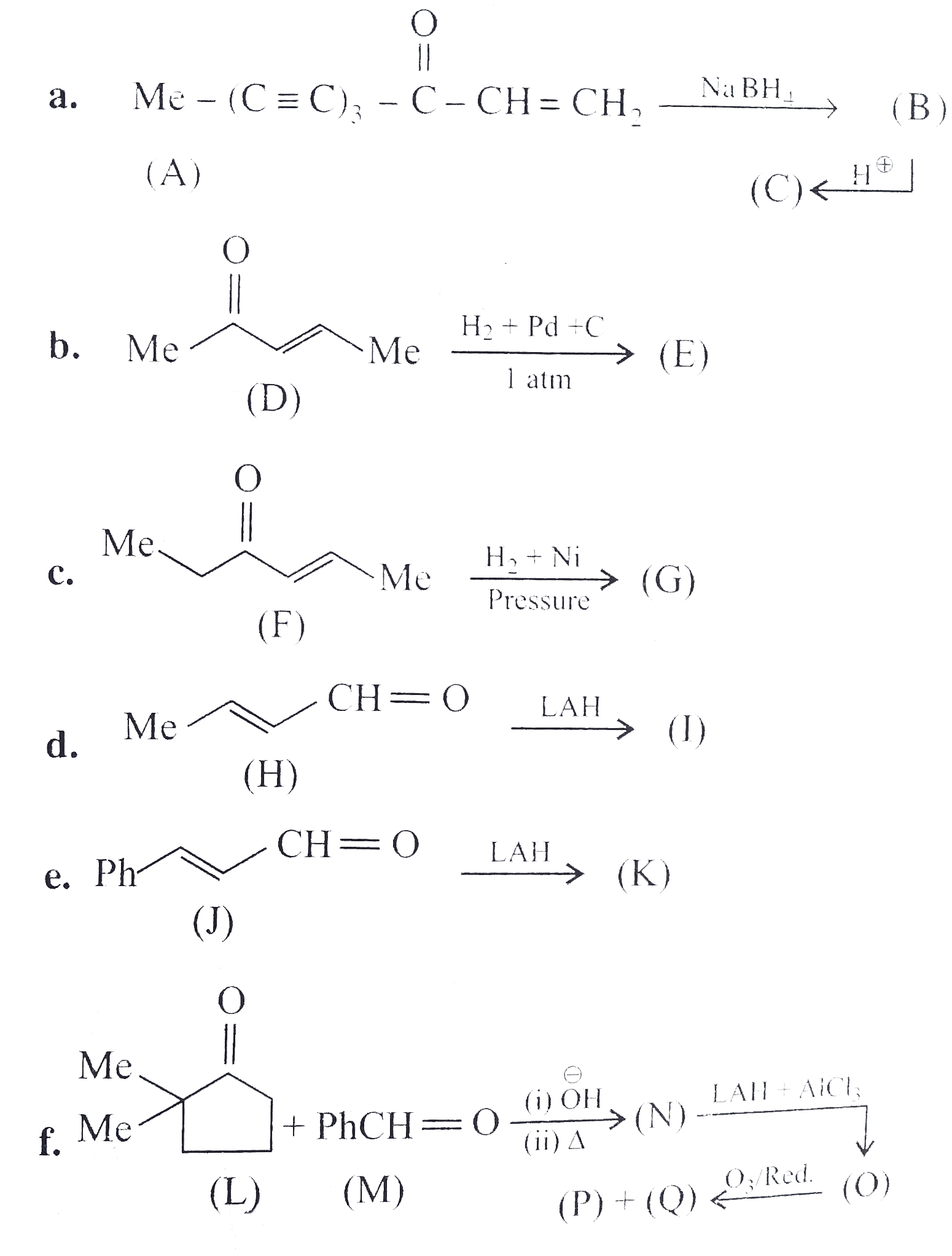
Text Solution
(B)⇒Me(C≡C)3CHOHCH=CH2,
(C)⇒Me(C≡C)3CH=CHCH2OH.
NaBH4 reduces only (CO) group and the resulting alcohol undergoes allylic rearrangement to give a more stable alcohol (in which there is increased coniugating), e.g.,
Me(C≡C)3CHOHCH=CH2
⏐⏐
⏐
⏐↓(i)H⊕(ii)−H2O
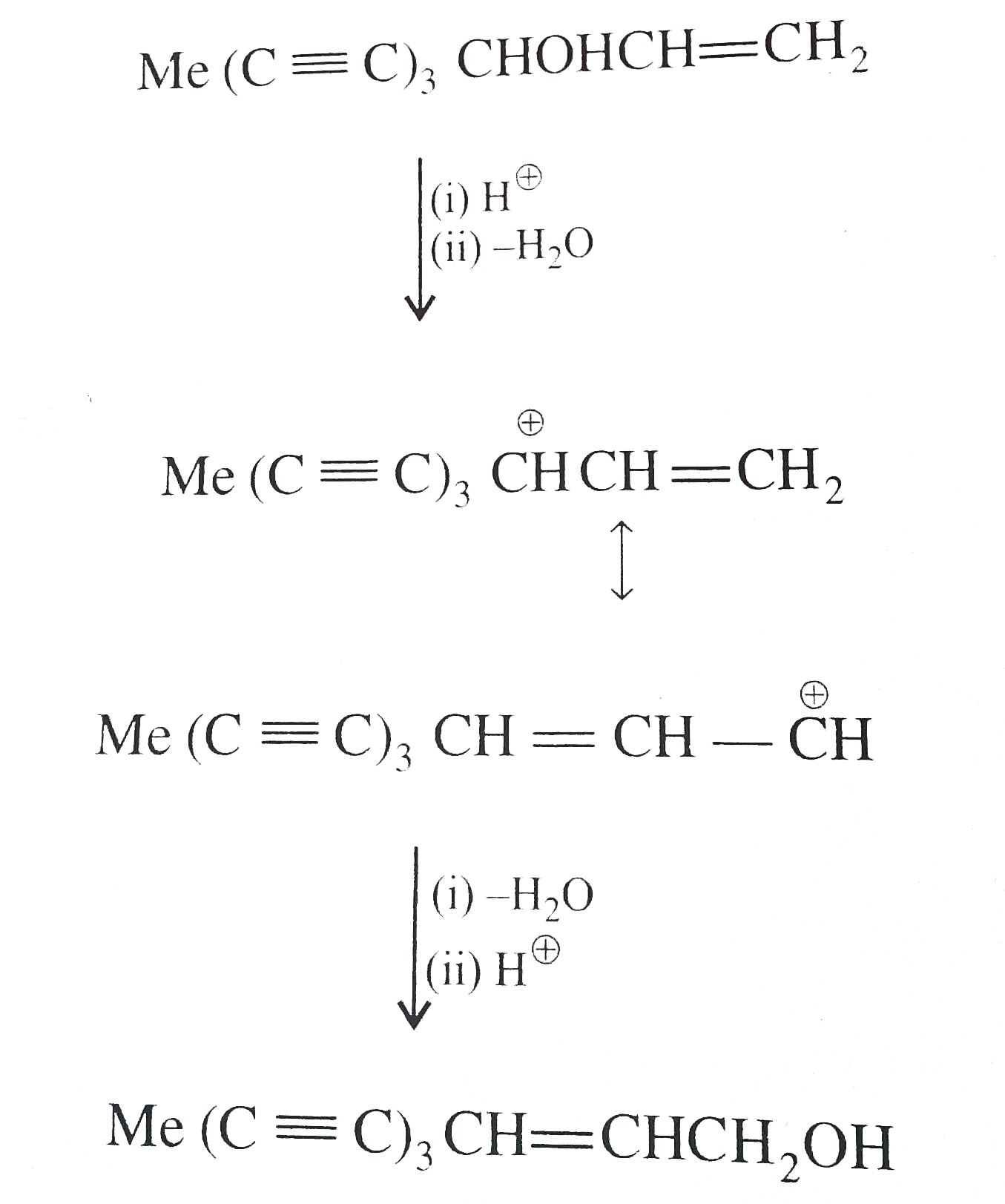
b. Under these conditions, the (C=C) bond is reduced preferenitally.

c. Ni is an extremely efficient catalyst for the hydrogenation and reduces both (C=C) bond to
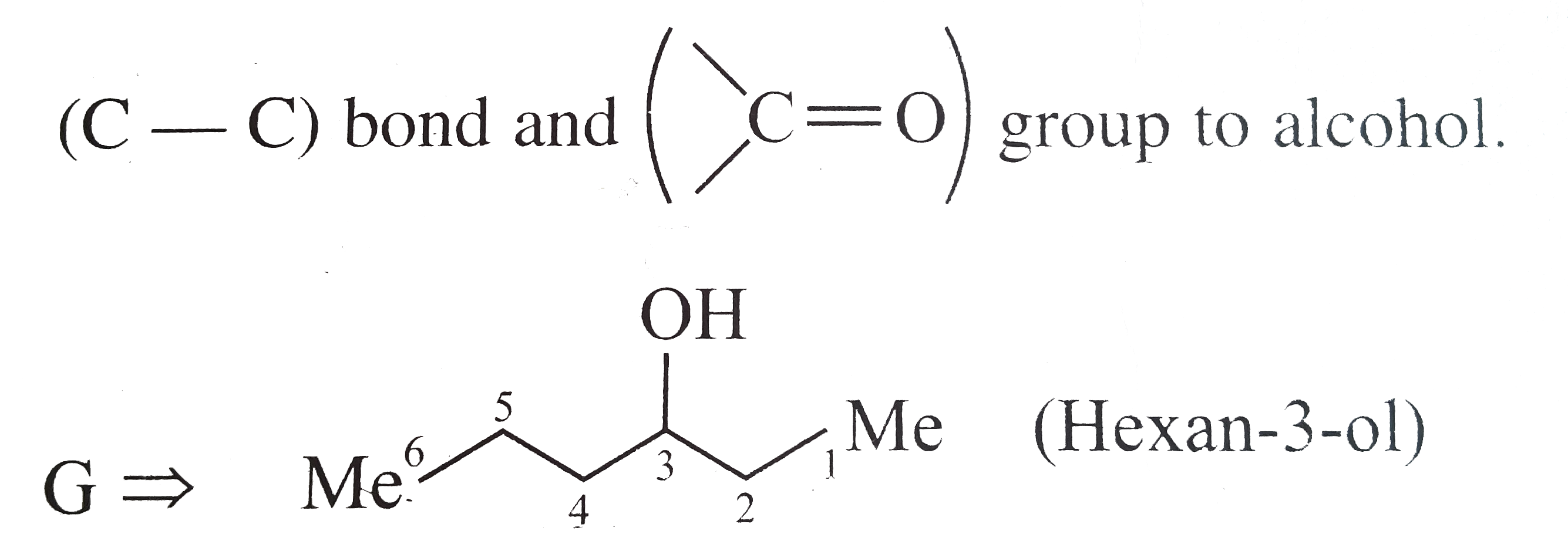
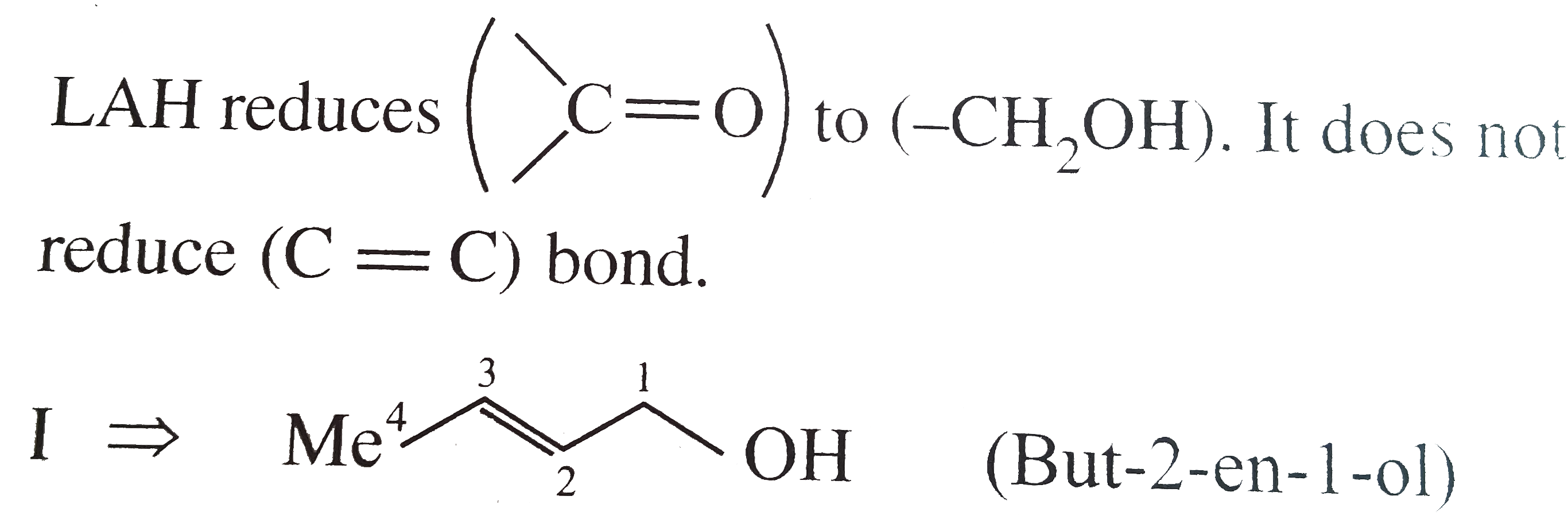
e. LAH reduces

to (−CH2OH) and also reduces (C=C) bond when the (PH) group is attached to the beta-position of the (C=C) bond.

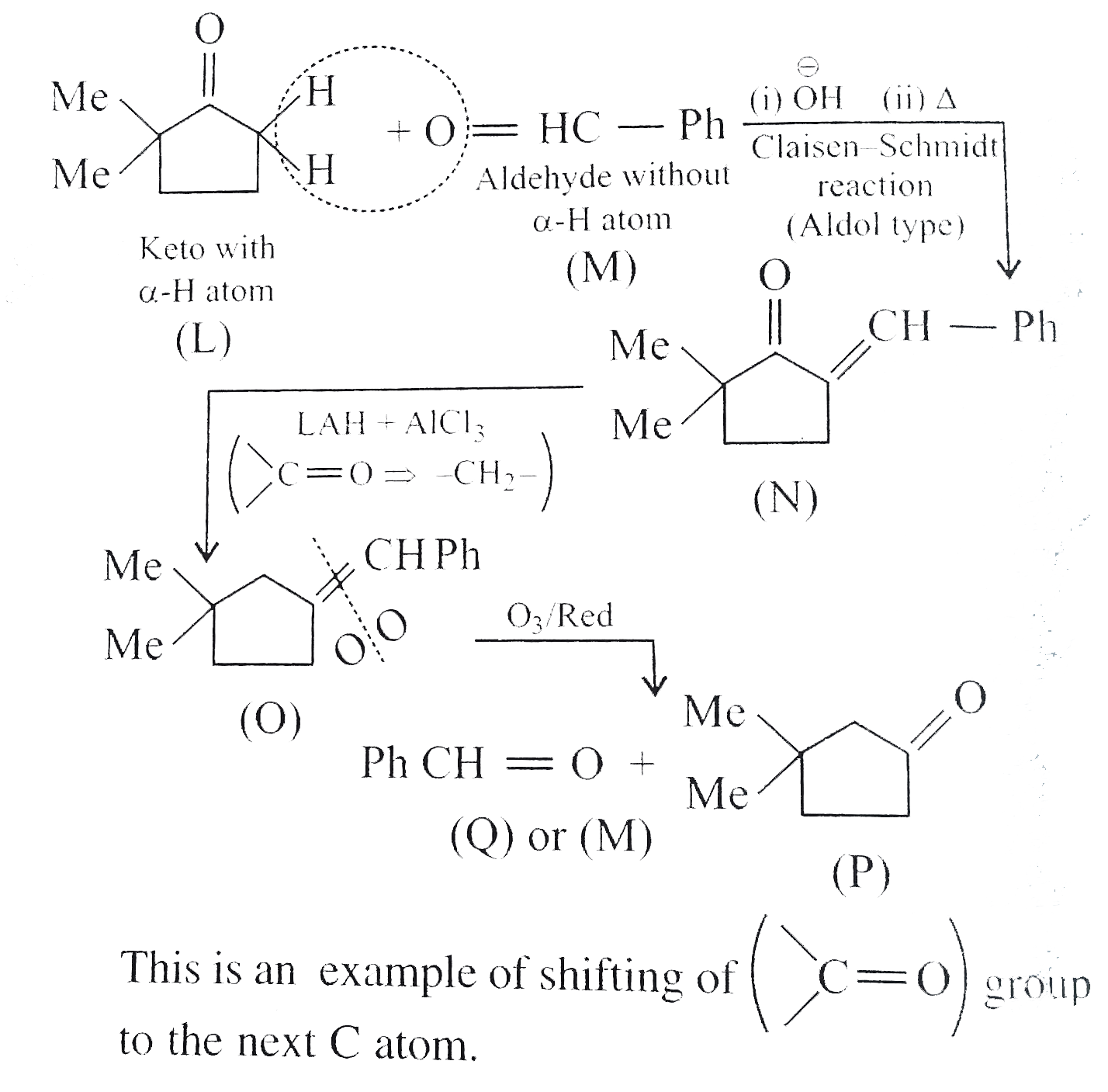
|
Topper's Solved these Questions
- REDUCTION AND OXIDATION REACTION OF ORGANIC COMPOUNDSBook:CENGAGE CHEMISTRY ENGLISHChapter:REDUCTION AND OXIDATION REACTION OF ORGANIC COMPOUNDSExercise:Solved Example
Explore 6 Videos
- REDUCTION AND OXIDATION REACTION OF ORGANIC COMPOUNDSBook:CENGAGE CHEMISTRY ENGLISHChapter:REDUCTION AND OXIDATION REACTION OF ORGANIC COMPOUNDSExercise:EXAMPLE
Explore 1 Video
- QUALITATIVE INORGANIC SALT ANALYSISBook:CENGAGE CHEMISTRY ENGLISHChapter:QUALITATIVE INORGANIC SALT ANALYSISExercise:Viva Voce Questions And Part-C (Analysis Of Cations)
Explore 42 Videos
- SOLID STATEBook:CENGAGE CHEMISTRY ENGLISHChapter:SOLID STATEExercise:Ex 1.2 (Objective)
Explore 9 Videos

